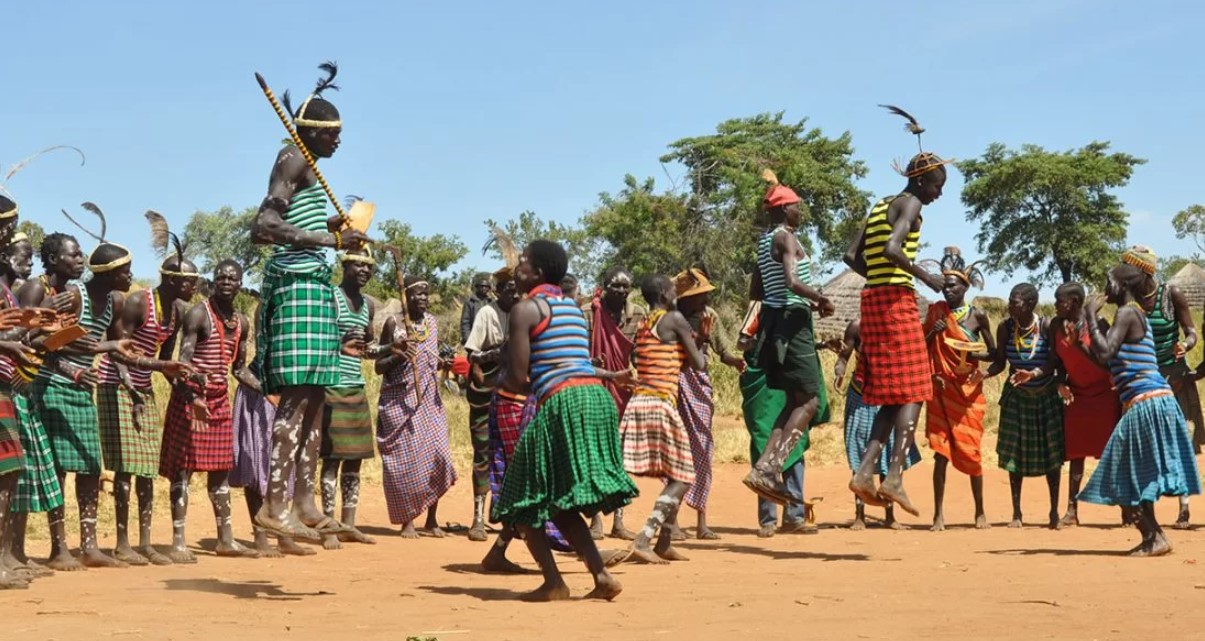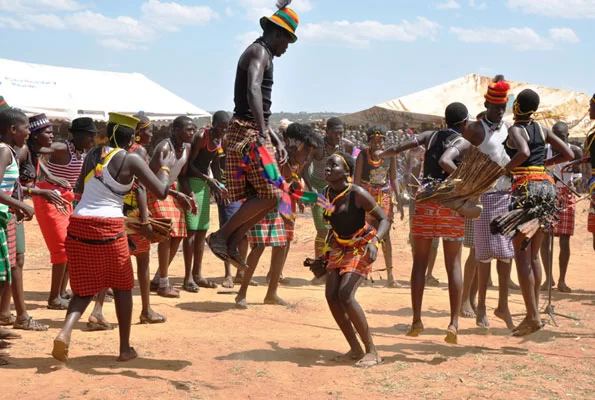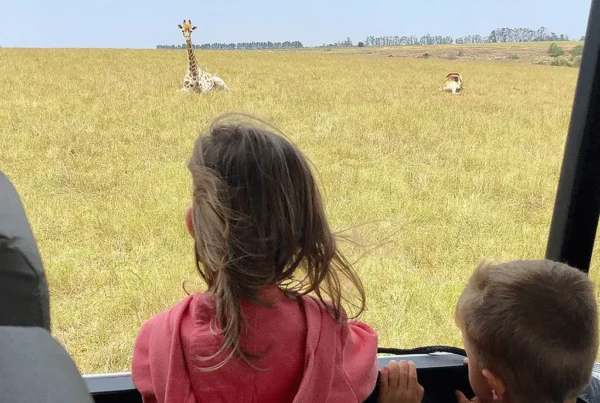A Cultural Safari with the Karamojong near Kidepo
Experiencing the Heartbeat of Uganda’s Northeast
In the remote and rugged landscapes of northeastern Uganda, where vast savannahs meet jagged mountains, lies an opportunity for travelers to experience something beyond traditional safari adventures. Here, the wilderness is not only defined by lions, elephants, and antelopes but also by the rich cultural heritage of the Karamojong people. A cultural safari near Kidepo Valley National Park is a journey into a world where traditions have been preserved for centuries, and where human life and wildlife coexist in a delicate balance.
Unlike conventional safaris, where the focus is primarily on observing wildlife, a cultural safari with the Karamojong offers insights into social structures, rituals, and everyday life in a semi-arid landscape that has shaped human resilience and ingenuity. The Karamojong communities have maintained a lifestyle deeply rooted in pastoralism, art, and oral traditions, making them an integral part of the region’s identity. This article explores the cultural richness of the Karamojong, the immersive experiences available to travelers, and the unique ways in which culture and nature intersect in one of Uganda’s most remote regions.
Geography and Context: The Land That Shapes Culture
The Karamojong inhabit the semi-arid region of northeastern Uganda, encompassing areas surrounding Kidepo Valley National Park. The landscape is defined by rocky hills, sprawling plains, and seasonal rivers, with the Narus and Kidepo Rivers providing essential water sources for both humans and wildlife. This environment has profoundly influenced the Karamojong way of life, encouraging practices that balance survival, sustainability, and respect for nature.
The semi-arid climate, characterized by dry and wet seasons, dictates the rhythm of daily life. During the dry season, pastoralist communities move livestock strategically to access water and pasture, while the wet season brings grazing abundance and opportunities for communal agricultural activities. Understanding this geography is essential to appreciating the deep connection between the Karamojong and their environment, a connection that forms the foundation of the cultural safari experience.
The Karamojong People: Guardians of Tradition
The Karamojong are a Nilotic ethnic group whose identity is closely intertwined with livestock herding. Cattle are not merely economic assets; they are symbols of wealth, social status, and spiritual significance. The management of herds is guided by centuries-old knowledge, passed down through generations, encompassing grazing patterns, disease prevention, and water management.
Social structures within Karamojong communities are organized around clans, age sets, and gender roles, each carrying specific responsibilities and traditions. Elders hold authority and are regarded as custodians of history and culture, guiding younger generations in rituals, conflict resolution, and community decisions. The respect accorded to elders and the adherence to traditional knowledge systems are central to understanding the Karamojong way of life.
Women play vital roles in the community, managing household duties, food preparation, and traditional crafts. Beadwork, leatherwork, and weaving are practiced not only as forms of artistry but also as cultural expressions that reflect identity, status, and social connections. The intricate patterns, colors, and techniques used in Karamojong crafts are recognized as some of the most refined in East Africa, and they offer travelers a tangible link to the people’s heritage.
Cultural Immersion: Experiences for Travelers
A cultural safari with the Karamojong allows travelers to engage in immersive experiences that go beyond passive observation. Visitors may spend time in homesteads, observing daily routines, learning about traditional food preparation, and participating in communal activities. Interaction with children and youth provides insights into educational practices, games, and the transmission of cultural values.
Rituals and ceremonies offer profound windows into Karamojong spirituality and social life. Initiation ceremonies, traditional dances, and communal gatherings are conducted with careful attention to ancestral practices and symbolism. These events are not staged for tourists; rather, they are genuine expressions of identity, offering travelers the rare opportunity to witness living traditions that have endured through centuries.
Music and dance play central roles in Karamojong culture. Rhythmic chanting, drumming, and song accompany dances that mark significant life events, including marriages, harvests, and initiations. Participation in these activities, when permitted, allows travelers to experience the vibrancy and emotional resonance of the community firsthand. Guides facilitate respectful engagement, ensuring that visitors observe protocols and contribute to a mutually enriching experience.
Traditional Knowledge and Survival Skills
The Karamojong have developed a profound understanding of the land, animals, and climate, skills that have been refined over generations. Knowledge of edible plants, water sources, and natural remedies is integrated into daily life, reflecting an intimate connection with the environment. Travelers on cultural safaris often learn about these practices, gaining insights into how communities thrive in semi-arid conditions where resources are scarce.
Animal husbandry techniques are central to Karamojong expertise. Herding strategies, disease management, and migration patterns are taught to younger generations as a matter of survival and social continuity. Observing and sometimes participating in these practices allows travelers to appreciate the depth of traditional knowledge and the ingenuity required to sustain life in challenging ecosystems.
Cattle and Social Economy
Cattle are the cornerstone of Karamojong society, influencing social interactions, economic exchange, and spiritual life. The size and health of a herd determine wealth and social standing, while livestock transactions, including bride price payments and trade, shape community relationships. Herding is not merely an economic activity but a cultural practice embedded with rituals, songs, and proverbs that communicate values, history, and aspirations.
Travelers on cultural safaris gain insights into the centrality of cattle, observing the careful management of herds, communal grazing systems, and the ceremonial aspects associated with livestock. Understanding this relationship between humans and animals enriches the safari experience, highlighting the complex interplay between culture, economy, and ecology.
Interactions with Wildlife: Coexistence in the Wild
The proximity of Kidepo Valley National Park adds a unique dimension to cultural safaris with the Karamojong. Wildlife is an ever-present factor, influencing grazing strategies, settlement patterns, and risk management. Elephants, antelopes, lions, and other species often move through areas where communities live, necessitating knowledge of animal behavior and mitigation practices to prevent conflicts.
Travelers may observe these interactions, gaining an understanding of how human communities and wildlife coexist in a shared landscape. This perspective enhances appreciation of Kidepo’s conservation significance and underscores the resilience and adaptability of the Karamojong people.
Cuisine and Traditional Practices
Food preparation is a daily ritual that reflects both resourcefulness and cultural identity. Traditional dishes, often based on millet, sorghum, maize, and occasionally meat or dairy, are prepared using methods passed down through generations. Visitors may participate in the preparation of meals, learning about techniques, flavors, and the communal aspects of dining.
Crafts, including beadwork and leatherwork, are produced with remarkable skill and attention to detail. These crafts are not merely decorative but convey stories, social roles, and status. Travelers can engage with artisans, gaining insights into techniques, symbolism, and the cultural significance of materials and designs. These experiences create a multi-sensory understanding of Karamojong culture, blending visual, tactile, and gustatory learning.
Seasonal Life and Cultural Cycles
The lives of the Karamojong are attuned to seasonal rhythms. Dry and wet seasons dictate herd movements, agricultural activities, and social events. The dry season often involves longer cattle migrations and preparation for scarcity, while the wet season brings abundance, communal celebrations, and agricultural planting. Travelers visiting at different times of the year may witness distinct aspects of daily life and cultural expression, emphasizing the dynamic nature of tradition in response to environmental conditions.
Understanding these cycles allows travelers to contextualize observed practices, from livestock management and food preparation to ceremonial gatherings and conflict resolution. The cultural safari becomes an opportunity to witness resilience, adaptability, and continuity in action, providing profound insight into the relationship between humans, environment, and wildlife.
Guided Cultural Safaris: Enhancing Understanding
Guided cultural safaris are essential for ensuring respectful and meaningful engagement. Knowledgeable guides facilitate introductions, explain customs, and interpret the significance of observed practices. They ensure that visitors observe social protocols, avoid intrusive behaviors, and gain a deeper understanding of the interconnectedness of Karamojong life with the surrounding ecosystem.
Guides often provide historical context, explaining how colonial legacies, regional conflicts, and conservation policies have influenced cultural practices. This framing allows travelers to appreciate both continuity and adaptation in Karamojong society, enhancing the educational value of the safari while respecting community autonomy.
Photography and Documentation
Photography during cultural safaris requires sensitivity and awareness. While many Karamojong communities are open to sharing aspects of daily life, permission must be sought, and ethical considerations observed. Photographs are not merely souvenirs; they document living traditions and human interactions with the landscape. Travelers are guided to capture images respectfully, ensuring that cultural integrity is preserved while still creating meaningful visual records.
Photography provides a complementary dimension to the safari experience, allowing travelers to reflect on and share the richness of Karamojong culture with broader audiences. When conducted thoughtfully, it enhances understanding and appreciation rather than imposing on the community.
Conservation and Cultural Preservation
The cultural safari is intrinsically linked to broader conservation efforts. The preservation of Karamojong traditions aligns with the conservation of Kidepo Valley National Park, as both depend on sustainable interactions with the environment. Tourism initiatives, when managed responsibly, provide income that supports community development, cultural preservation, and environmental protection.
Visitors gain insight into the symbiotic relationship between culture and conservation, observing how community knowledge contributes to wildlife management, natural resource stewardship, and ecological balance. This understanding transforms the safari from a passive experience into an informed engagement with sustainable practices.
Immersing in Karamojong Life
A cultural safari with the Karamojong near Kidepo Valley National Park offers a profoundly enriching experience that blends wildlife observation, cultural immersion, and ecological understanding. Travelers are not merely spectators but participants in a living landscape, witnessing centuries-old traditions, seasonal rhythms, and resilient ways of life.
To fully experience this unique dimension of Uganda’s northeast, the guidance and expertise of professional safari operators are invaluable. Every aspect of travel, from transportation and accommodation to cultural engagement and ethical interaction, can be facilitated to ensure a meaningful, respectful, and unforgettable experience.
For those seeking to combine the majesty of Kidepo’s wildlife with the vibrancy and depth of Karamojong culture, book your Africa tours and safaris with WildHorn Africa, a trusted partner dedicated to creating immersive, responsible, and unforgettable journeys through one of Uganda’s most remarkable regions.





 WildHorn Africa – Authentic and unforgettable tours across Africa, guided by local experts who know the land, wildlife, and culture best.
WildHorn Africa – Authentic and unforgettable tours across Africa, guided by local experts who know the land, wildlife, and culture best.


